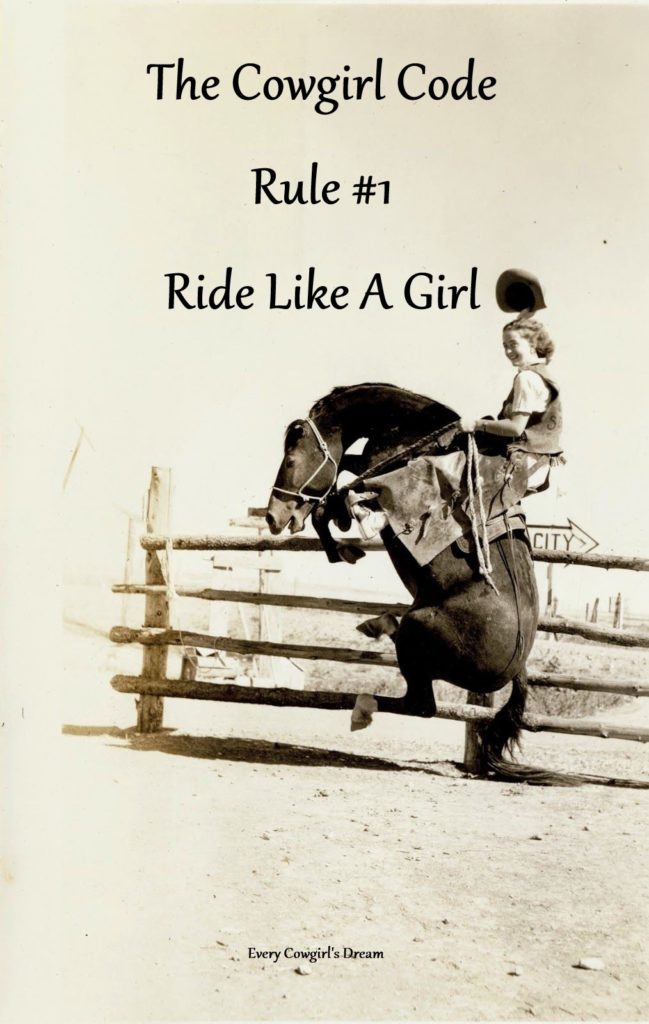
The Cowgirl Code

Mules, Mule Talk the podcast, mule training books by Cindy K Roberts

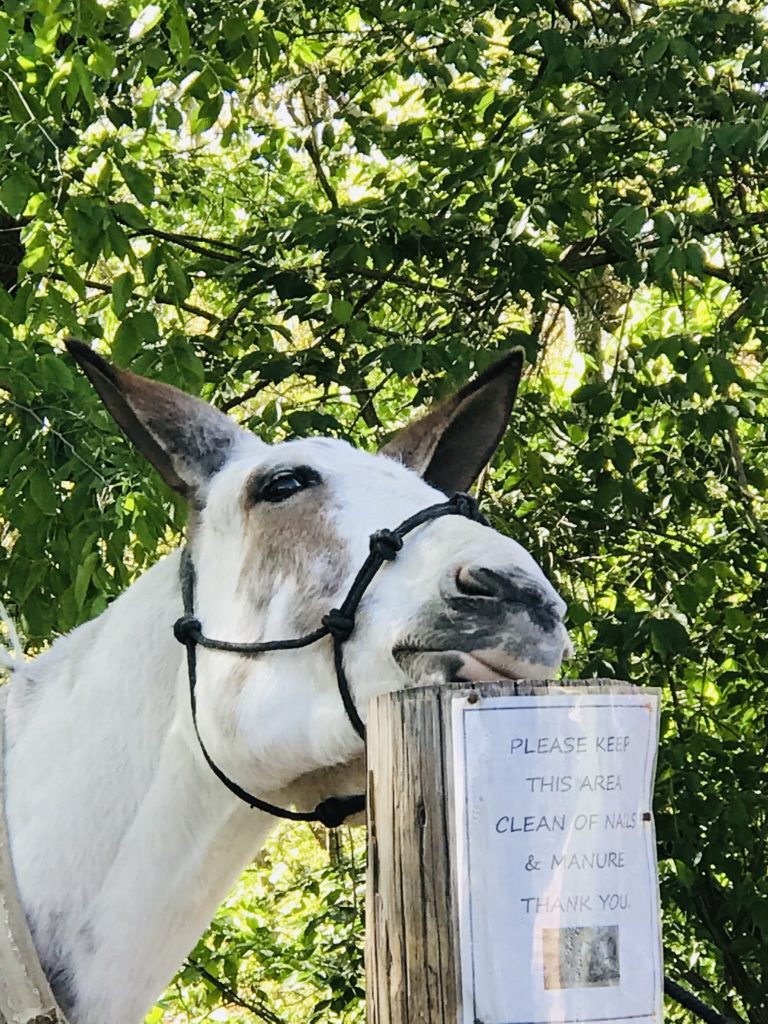
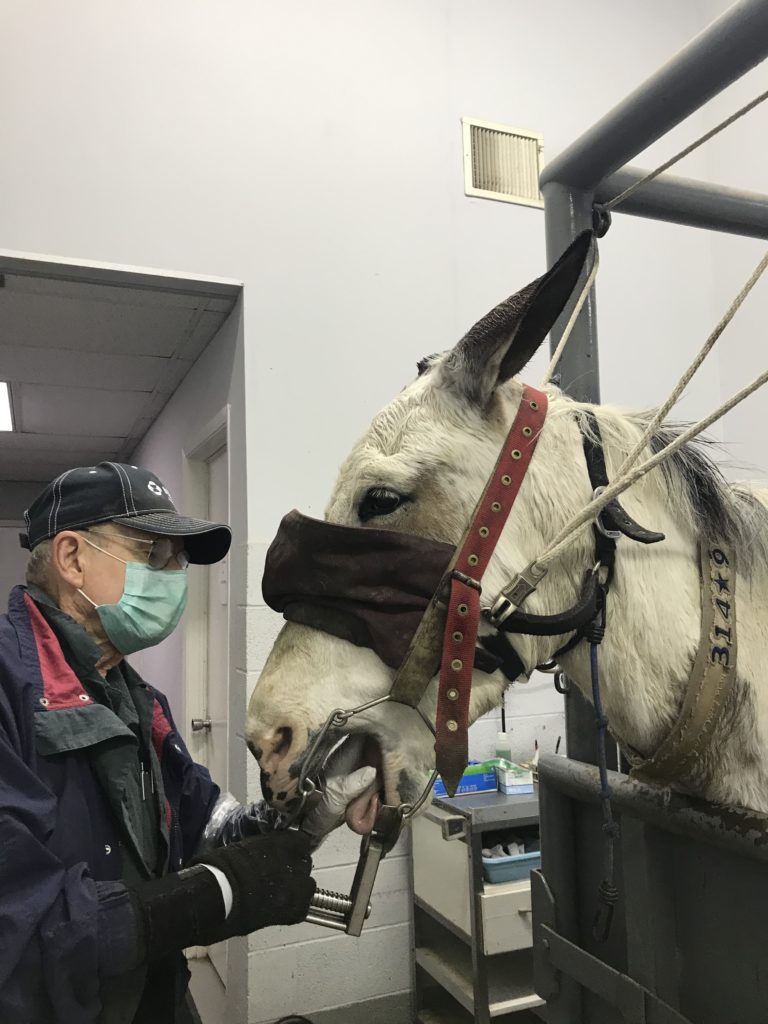
Teeth floating is necessary for mules. The process is to “file” down points that develop over time in the mule’s mouth. Equine teeth are open-rooted, which means that they grow continuously and rely on chewing to keep them ground down to the correct length. The top set of molars is wider than the lower set; equines chew in a circular motion, which means that over time if the mule has an uneven bite, sharp spurs can develop. Floating is the process whereby the spurs or spikes are “floated” or rasped down with a dental file designed for use in equines. Age is not always a factor; have your mule’s teeth checked during regular vet visits. Floating your mule’s teeth is very important in order to prevent oral pain and to ensure your mule is healthy overall.
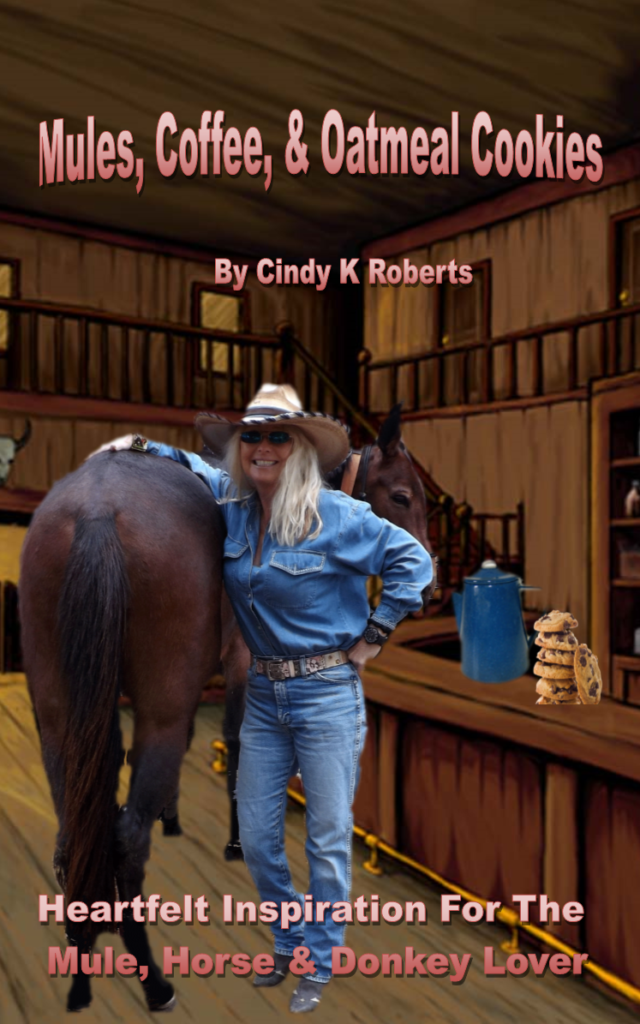
I am proud to release this book, it was fun to write and there are heartfelt stories about my experiences with mules, horses and donkeys over the years. Every mule fart has been documented, including mule cocktail recipes along with my tips on mule care products. 167 pages of shenanigans that will tickle your funny bone! It is available now on Amazon Prime at this link: https://www.amazon.com/Mules-Coffee-Oatmeal-Cookies-Inspiration/dp/B0857BR1TW/ref=sr_1_3?dchild=1&keywords=mules%2C+coffee+and+oatmeal+cookies%2C+cindy+k+roberts&qid=1584285113&sr=8-3
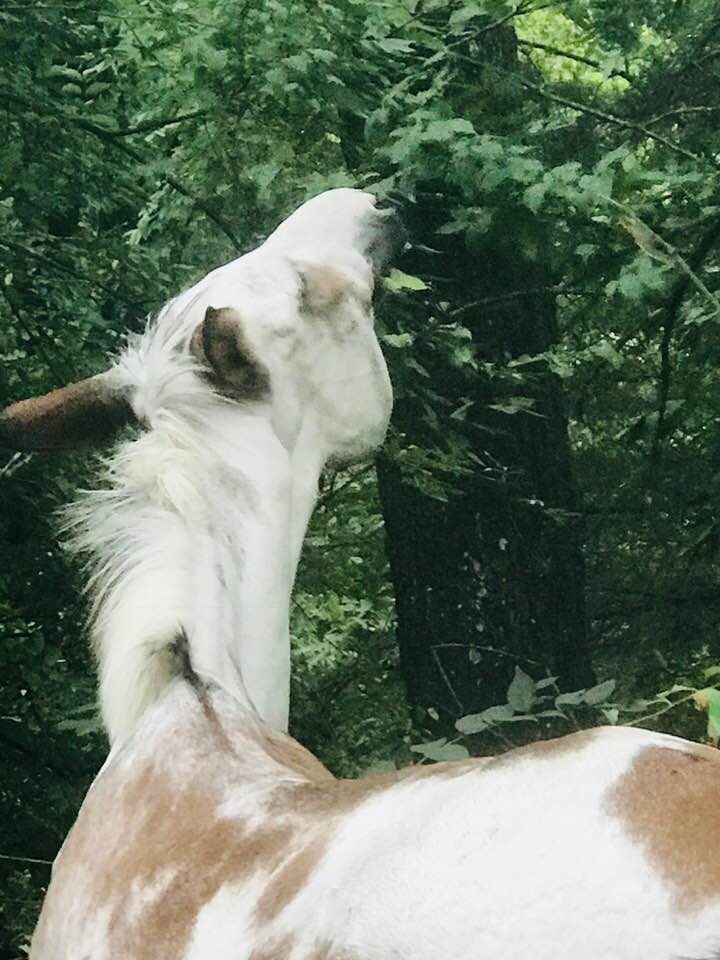
Mother Nature made them this way. Decisive on their likes and dislikes, they are judgmental animals. You might say they view things in black and white. Either they like it or they absolutely don’t. It’s not that the mule has ESP or can read your mind, but he is very good at reading the situation. And a mule isn’t going to work at something that he doesn’t like. Now that you know this, try not to be a knucklehead when working with your mule, whether it is a new task you are introducing or just spending time on the trail.
Mules are sensitive; they have a keen sense of smell and acute hearing and they are athletic like his horse mother. The thinking side of the mule comes from his father, the donkey jack. This is what makes this hybrid a unique animal to work with. Their high sense of self-preservation is what makes the mule an excellent trail partner. They certainly won’t allow them to be in a situation that could cause them harm.
Comfort is everything to the mule. They will not tolerate ill-treatment or endure incorrectly fitted tack, saddles, or a saddle pad that does not allow for good wear or comfort. Behavior issues will quickly develop if the mule is in discomfort or suffering from pain. A mule that is experiencing discomfort may toss his head, try to rush downhill, buck, kick out, move sideways, gape at the mouth, or even rear. See? This is more valuable information you now know…so try not to be a knucklehead when saddling or trying out new gear on your mule. Keeping your tack and gear clean is ideal and of course, you should adjust it several times during your ride, be aware when your mule gains/loses weight, and take notice of hair density…it’s not rocket science, but you are dealing with an animal that is smarter than you (and me) so, try to keep up.
If the mule’s negative behavior escalates, a vet or massage therapist may be the answer.
If you are needing to find an answer to your situation I am glad to talk with you. Contact info: everycowgirlsdream@gmail.com. www.everycowgirlsdream.com/store.html
By Cindy K Roberts
In the rodeo world, an established point system that scores a rider’s performance is used. For example, a judge awards points primarily for spurring action in bareback and saddle bronc riding. The rider loses points if his toes are not turned out with his spurs in contact with the horse; if spurring is not continuous throughout the ride; and if he is not balanced and in control. Points are gained or lost according to the rider’s rhythm and timing with the horse’s bucking. Now, in bull riding, points are scored by the rider maintaining body control and position regardless of what the bull is doing. Spurring is not required in bull riding, but definitely adds points to the score. When it comes to scoring the stock, high kicking action with hind legs fully extended makes for a better score. This all adds up to a better show and yes rodeo is a sport, it takes balls and one must be an athlete.
Interestingly, 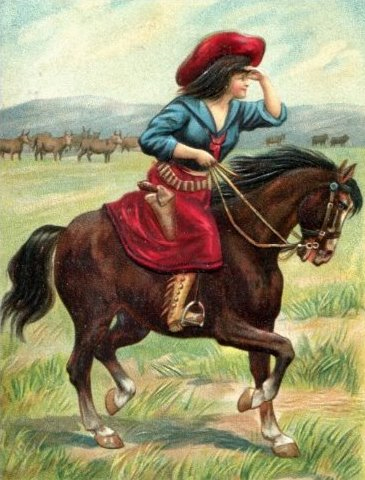 the established point system in the cowgirl world is similar. Points are gathered from the first pony ride to the very last barn dance, these special moments build up the very ego of a special woman who is connected with her horse or mule. The greater the experience the higher the points and the more accomplished the rider feels. Unforeseen events or screw-ups work against the point system and are hard on the ego. Screw-ups such as getting dumped; you could get dumped by your horse or you could very well get dumped by your boyfriend; we know that neither is good…very stressful to the cowgirl’s ego. Pride is weighed in heavily on this point system; a gal has bragging rights on the very event that is recorded as an accomplishment or milestone in her Western world. Life is competitive around the barn and ranches; scoring high is essential.
the established point system in the cowgirl world is similar. Points are gathered from the first pony ride to the very last barn dance, these special moments build up the very ego of a special woman who is connected with her horse or mule. The greater the experience the higher the points and the more accomplished the rider feels. Unforeseen events or screw-ups work against the point system and are hard on the ego. Screw-ups such as getting dumped; you could get dumped by your horse or you could very well get dumped by your boyfriend; we know that neither is good…very stressful to the cowgirl’s ego. Pride is weighed in heavily on this point system; a gal has bragging rights on the very event that is recorded as an accomplishment or milestone in her Western world. Life is competitive around the barn and ranches; scoring high is essential.
An example of how the cowgirl goes about collecting her points: to score points one must be subjected to a series of events that involves moving hay, catching loose stock, training mules and horses, fixing fences, gatherin’ strays, and doctoring livestock. . . just to name a few. Of course, while performing these necessary barn or ranch assignments the cowgirl will be subjected to a certain amount of sweat, pain, blisters, possible burns, bruises, swelling, sprains, fractures, breaks, tears, and at times . . . blood. As one may have guessed, blood will help you score higher as well as the sprains, fractures, and breaks; throwing a mule into this mix is clearly a bonus. Being subjected to mud puddles or taking in some dust rates lower on the score sheet. Cleaning tack as necessary as it is, also rates lower on the score sheet as well along with feeding the barn cats.
It seems that the more mileage one can get out of telling a story regarding one’s own scrape with nature or their last heroic triumph in breaking their last mule, adds a little spark to the tale itself. Including heightened details in your discussion on concussions, memory loss, and staggering to find your way back after being thrown on the trail is what sets fire to the cowgirl’s soul. You see, there’s something about a war story, in this case, a cowgirl’s adventure tale, that brings a flame to the listener’s ear. The more drama ensued in the story, the higher points were earned. No one wants to hear a lame story on how the cat food was bought on sale for the barn cats, pouring the remainder in airtight containers and taking inventory of the felines lined up for dinner. Shoveling manure is not rated high for storytelling either. Even though shoveling manure is necessary, it is listed in the average B rating in the points category, simply because it does not require a higher skill set to do the task. But . . . to hear the story on how mule cowgirl, Prairie Rose got caught up in the high and mighty Missouri River from her mule slipping into the treacherous waters with sinking sludge underneath him, she clinging to the saddle horn, then to ride out the muddy rapids to the other side; that true tale itself will take one’s breath away! Yes, that is one worth talking about! You can easily imagine the snakes and snapping turtles lurking through the waters, not to mention the turkey vultures hovering above!
The time you rode the northern slope one sunny February afternoon, your mule slipped on a patch of frozen ground; all of a sudden, went down, crashed on his side, pinned your leg to the ground, then ended up with a sprained ankle. Crawling on hands and knees to find a strong limb to support you, this all adds special effects to the story. Never mind that your mule stood there at the bottom of the hill waiting for your return, licking and chewing the whole time. You are going for the round of bonus points. This is your opportunity to add the part, you called your mule that promptly walked up and waited patiently as you struggled to get back on. The bigger the injury, the more sloped over in the saddle one should be when returning to camp or the barn. All these treacherous details are not spared in a good cowgirl adventure story. By the way, this is important stuff here: everyone leaves out the part about tetanus shots, antibiotics and ointment. There’s something about tetanus shots, ointment, and gauze bandaging that doesn’t really appeal to the readers or listeners of a cowgirl up story; if you want to remain popular, you just don’t mention it.
Getting lost on the trail is not considered a heroic experience for earning points, because you are supposed to have enough sense not to get lost in the first place. However, if one had to use a knife or pistol in order to survive while trying to find their way, then that places the event into a whole new category. Anytime you add bears, struggling with a big cat or your mule was standing guard for coyotes, the points are higher and that is something worth writing home about.
The everyday actual tasks that rank high on the cowgirl Richter scale: roping wild mini-donks to corral them for the farrier visit, herding up young mules for their vaccinations, sorting mules for the pack string and moving cows to the other pasture; these are factual accounts of a cowgirl’s day that is worth some salt in talking about. Giving yourself stitches, cauterizing a wound, or drinking out of a hoof print certainly ranks high up there for gaining cowgirl points and will entertain your listeners for a long while.
There are special and cherished moments that will never be forgotten; giving birth has a special meaning and raising children is recognized as all-time extra points to be given to the living cowgirl. Helping to deliver a newborn foal into the world, bottle feeding an orphan calf, doctoring a sick horse . . . these challenges cowgirls embrace in their own lives. Cowgirls take responsibility for their everyday chores at home and work; they take pride in their work and they wear it well. They live, eat, drink, and sleep the cowgirl lifestyle. They contribute to everyone around them, they share and help others. They breathe in the cowgirl essence into their very soul. Live life well and score high amigos.
~Cindy K. Roberts
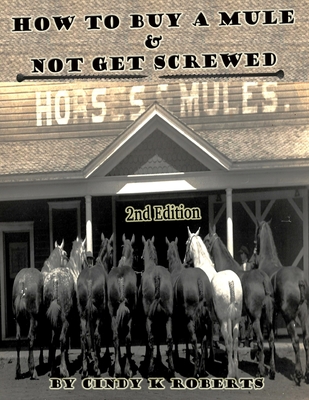
The Buying Process
Just how do you buy a mule, horse, or donkey without getting screwed? It’s not like going to the local dealership to buy a truck, where you select the gear package, pick out a color, test drive it, and take it home. Buying a mule can be so involved and shopping alone for a good one is like searching for the Holy Grail. Buying a truck is so much easier! Trucks don’t get parking lot sour and they don’t form strong attachments to other trucks.
I have learned that most new buyers are not comfortable with dealing with a seller when buying a mule, horse or donkey. High-pressure sales people can be obnoxious to deal with and this makes the buying experience unpleasant. The smooth-talking salesmen can be so slick that an uneducated buyer can walk away with a mule that is not exactly what they had in mind to begin with.
Buying a mule is a skill set and yes, you can learn it; especially since I wrote the book on it! I will take you through each step on making a smart purchase; you will know how to close a deal and walk away a winner because you bought your mule with better judgment. You will be more confident during the buying process and you won’t be second-guessing yourself on your recent mule purchase. You feel better already, don’t you? I know I do because I see many mistakes being made by both the buyer and the seller; this can be critical to the new mule owner and the mule where neither comes out ahead.
It doesn’t do the mule any justice to be placed in the hands of an unqualified owner. The outcome for a mule handler who lacks confidence and a higher skill set makes it into a risky situation. I have seen new mule owners get hurt while attempting to work with their new mule; including the barn help that offered their expertise or services during the handling process. In addition, I have seen mules get hurt due to a new mule owner or trainer who used their methods in their attempt to manage the new mule.
I would like to see changes in the mule industry. I would like to see more educated trainers and handlers in the business. I am hopeful that in time there will be more qualified mule buyers and professional sellers qualifying their buyers before taking their check. That is where this book comes in; it will help to educate the buyer and improve the business transaction between buyer and seller. Let’s learn about seller techniques so you the buyer at least have a sporting chance at mule buying.